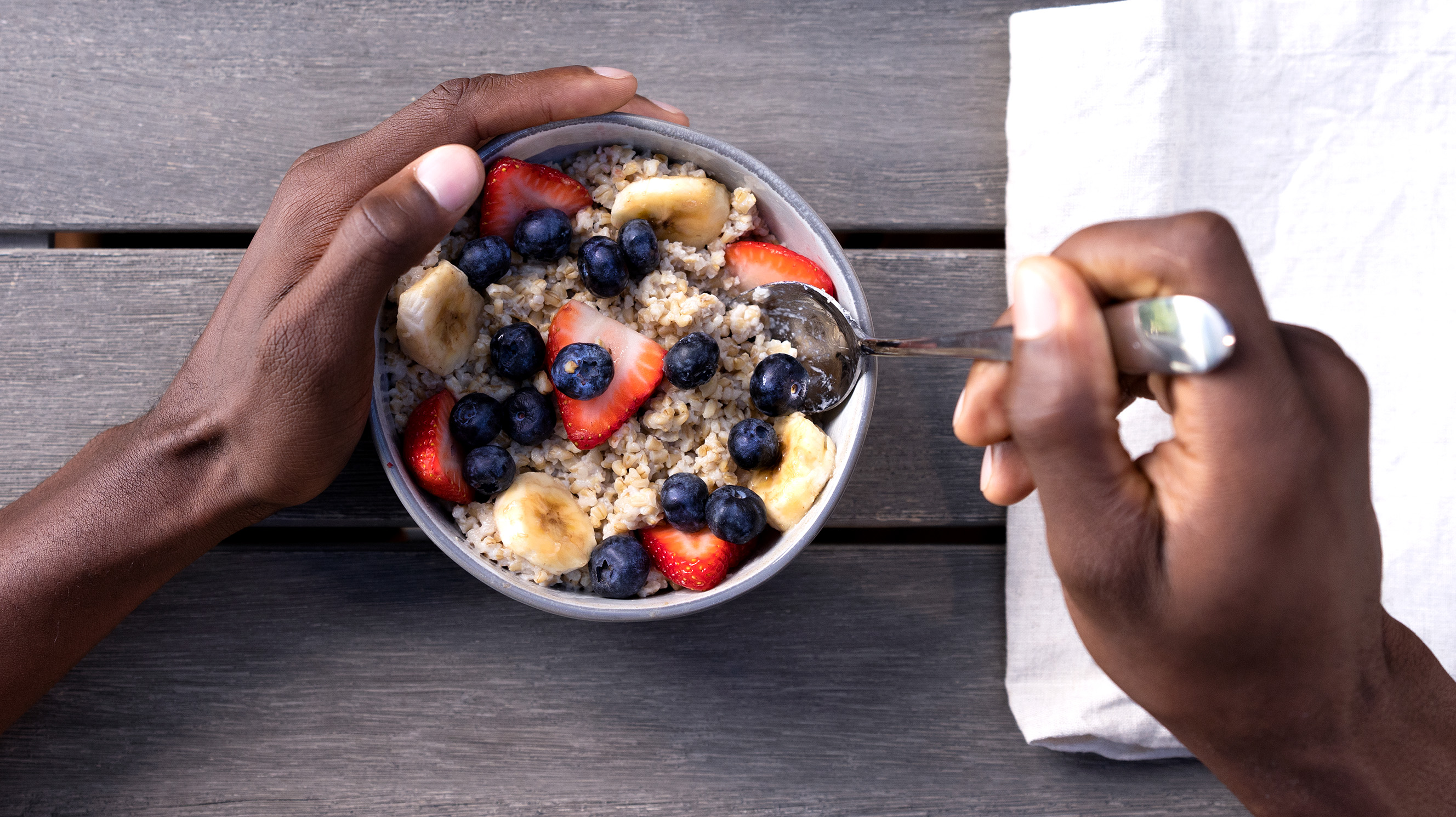Nutrition
How different carbohydrates affect your blood sugar
Published: Aug. 26, 2024
Updated: Aug. 21, 2025
5 min read
The content in this article should not be taken as medical advice. Please consult with your healthcare provider regarding your individual health needs.
Carbs get a pretty bad rap these days. But the truth is they’re essential to a healthy diet. The key is in understanding the three different types and taking stock of how each affects your body — and particularly, your blood sugar.

What are carbohydrates?
Carbohydrates, along with protein and fat, form the trio of macronutrients crucial to your body’s functioning. They serve as the primary source of fuel, powering everything from physical activity to brain function.
Each type of carb has a distinct impact on your blood sugar levels and overall health. Below, we’ll review the three main types of carbs:
- Sugars
- Starches
- Fiber
Sugars
Sugars, whether naturally occurring or added, get digested quickly, leading to spikes in glucose levels. Naturally occurring sugars can be found in fruits and milk, while added sugars lurk in baked goods, sodas, and many processed foods. It's essential to be aware of sugar’s various aliases which can keep them hidden on ingredient lists. For example, honey, molasses, and anything ending in -ose.
Starches
Starches, prevalent in foods like legumes and whole grains, break down into sugars gradually. This slow release results in a steadier rise in glucose levels, providing sustained energy. However, starches in processed or refined carbs, like white bread and pasta, can be broken down rapidly, which tend to cause rapid spikes in blood sugar.
Fiber
Unlike sugars and starches, fiber undergoes slow digestion, minimizing spikes in glucose levels. Additionally, fiber-rich foods offer a host of health benefits, including improved digestion, heart health, and weight management. Plant-based foods like vegetables, fruits, and whole grains are excellent sources of fiber.
What about “glycemic index” and “glycemic load”?
So, three kinds of carbs, each with a different effect on blood sugar. That likely makes sense. But what about all this “glycemic” business?
Don’t worry—it’s a lot simpler than it sounds. And understanding glycemic index and glycemic load can further guide your food choices for better glucose management.
The glycemic index ranks carb-containing foods on a scale of 1-100 based on how quickly they raise glucose levels. The lower the number, the less effect the food has on your blood sugar. On the other hand, glycemic load considers both the quantity and quality of carbohydrates in a food item and their impact on glucose levels.
In essence, these are simply two additional ways we can really zoom in on the impacts that various foods have on our blood sugar.
Glycemic Index
Low (0-55)
- Bulgar, barley
- Pasta, parboiled (converted) rice
- Quinoa
- High-fiber bran cereal
- Oatmeal, steel-cut or rolled
- Carrots, non-starchy vegetables, greens
- Apples, oranges, grapefruit, and many other fruits
- Most nuts, legumes, and beans
- Milk and yogurt
Medium (56-69)
- Pita bread, rye bread
- Couscous
- Brown rice
- Raisins
High (70+)
- White bread and bagels
- Most processed cereals and instant oatmeal, including bran flakes
- Most snack foods
- Potatoes
- White rice
- Honey
- Sugar
- Watermelon, pineapple
Making informed choices
Carbohydrates play a vital role in our diet, serving as a primary source of energy. But not all carbs are created equal. Opting for fiber-rich whole foods over processed or refined carbs can promote stable blood sugar levels, sustained energy, and overall health.
And by understanding the glycemic index and glycemic load, we can use those metrics to make more informed choices that support our long-term health goals.

Curated & reviewed by: Alexa Stelzer
RDN, CDCES, CSPO
RDN, CDCES, CSPO
Alexa Stelzer is a Clinical Digital Specialist at Dexcom, with a background in clinical dietetics and program management.
